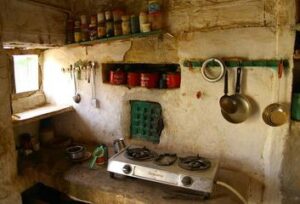- Posted on
- By Scotty
- In Fermenting Tips, Uncategorized
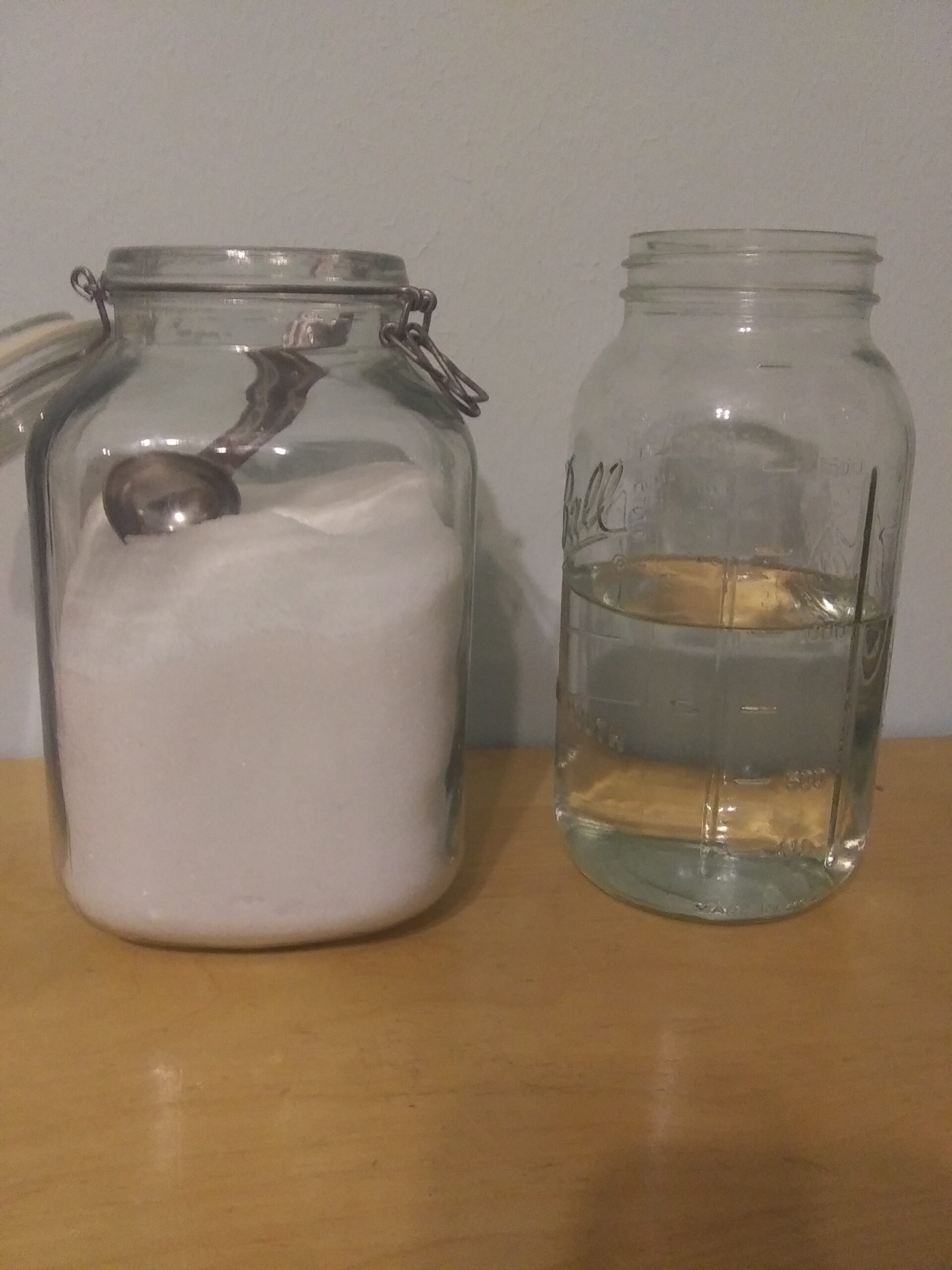
How to Make the Salt Water
Salt impedes bacterial growth. The thing about it is it impedes some bacteria more than others. Salt is used in fermentation because it only hinders the growth of the good anaerobic bacteria a little while it pretty much destroys the bad aerobic bacteria. Generally speaking salt is the weapon against bad bacteria that gives the good bacteria a chance to grow without competition. When fermenting vegetables salt water is the only essential ingredient other than the vegetables. Thats why its important to know how to determine and adjust your salinity based on your needs.
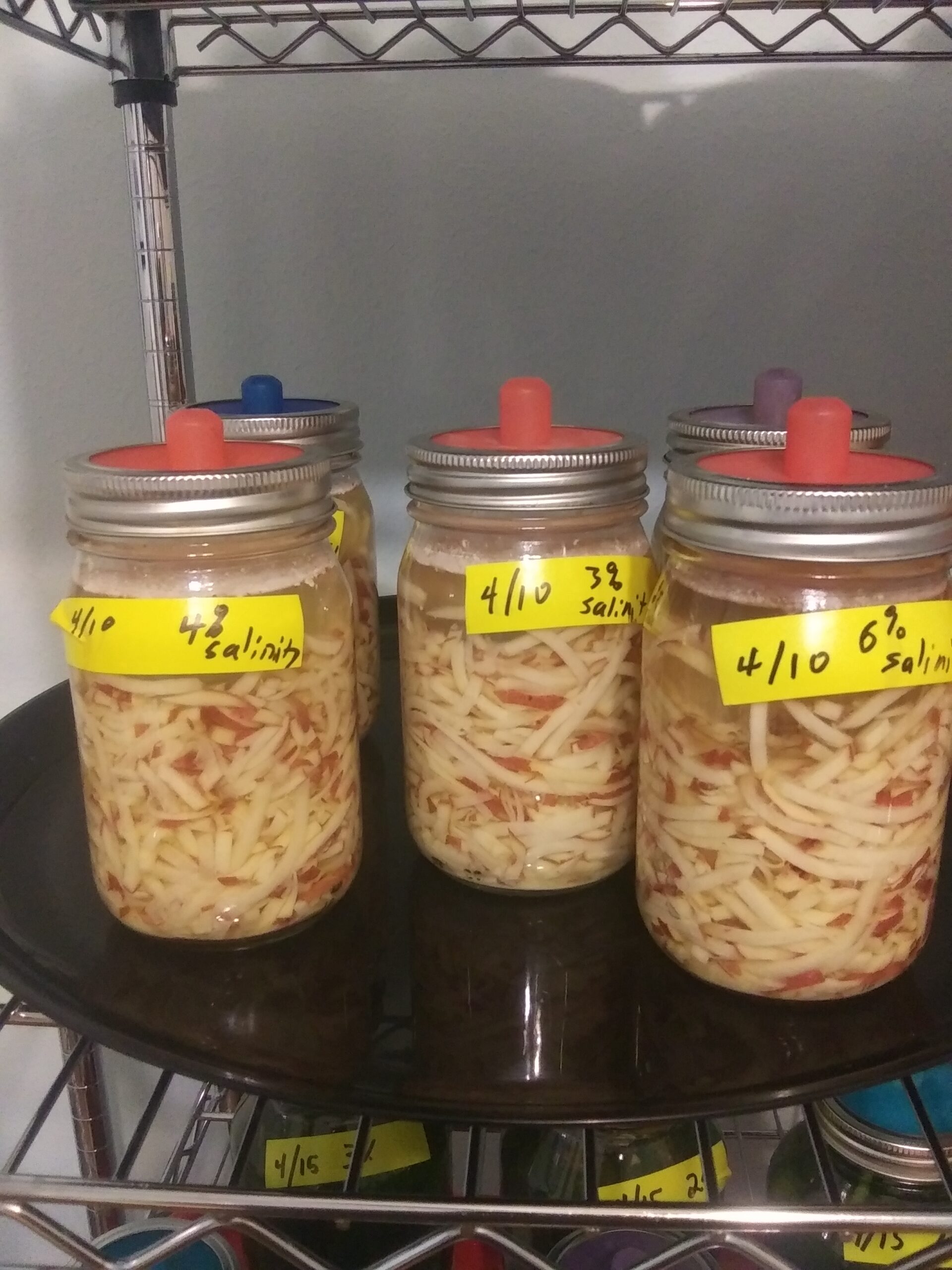
Typically you want to add just as much salt as is necessary and no more. Many vegetables need a light salinity brine like 2%. Other vegetables that have a higher water content or are more prone to mold and yeast growth might need a higher salt content like 5%. There are many conditions and preferences however that would cause you to vary from this. As mentioned previously salt hinders all bacterial growth some so if you wanted to slow your ferment down you add more salt. This is important during the hotter months when your ferments maybe going to quickly. A little extra salt will also make an extra crispy vegetable. The cell membrane of vegetables hardens during the fermentation process, this increases with more salt. Then there are instances where I am going to use a ferment in a recipe and I am just looking for something saltier. I generally however won’t vary too much more than half a percent or one percent when making these adjustments.
I have read in many places that iodized salt is not good for fermenting. I agree but I take it a step further. I think that you shouldn’t use any non-naturally derived salts. Sodium chloride is the chemical compound commonly known as table salt. When it is produced chemically it is free of other elements and compounds that would naturally bond with it. This is salt that is chemically ‘hungry’ and will balance itself by bonding with elements in its environment. This leaches minerals out of your ferment and eventually out of you. Salt from sea water or the mined pink salts are chemically balanced and do not leach minerals. When I discovered this I replaced table salt in my ferments as well as on my table.
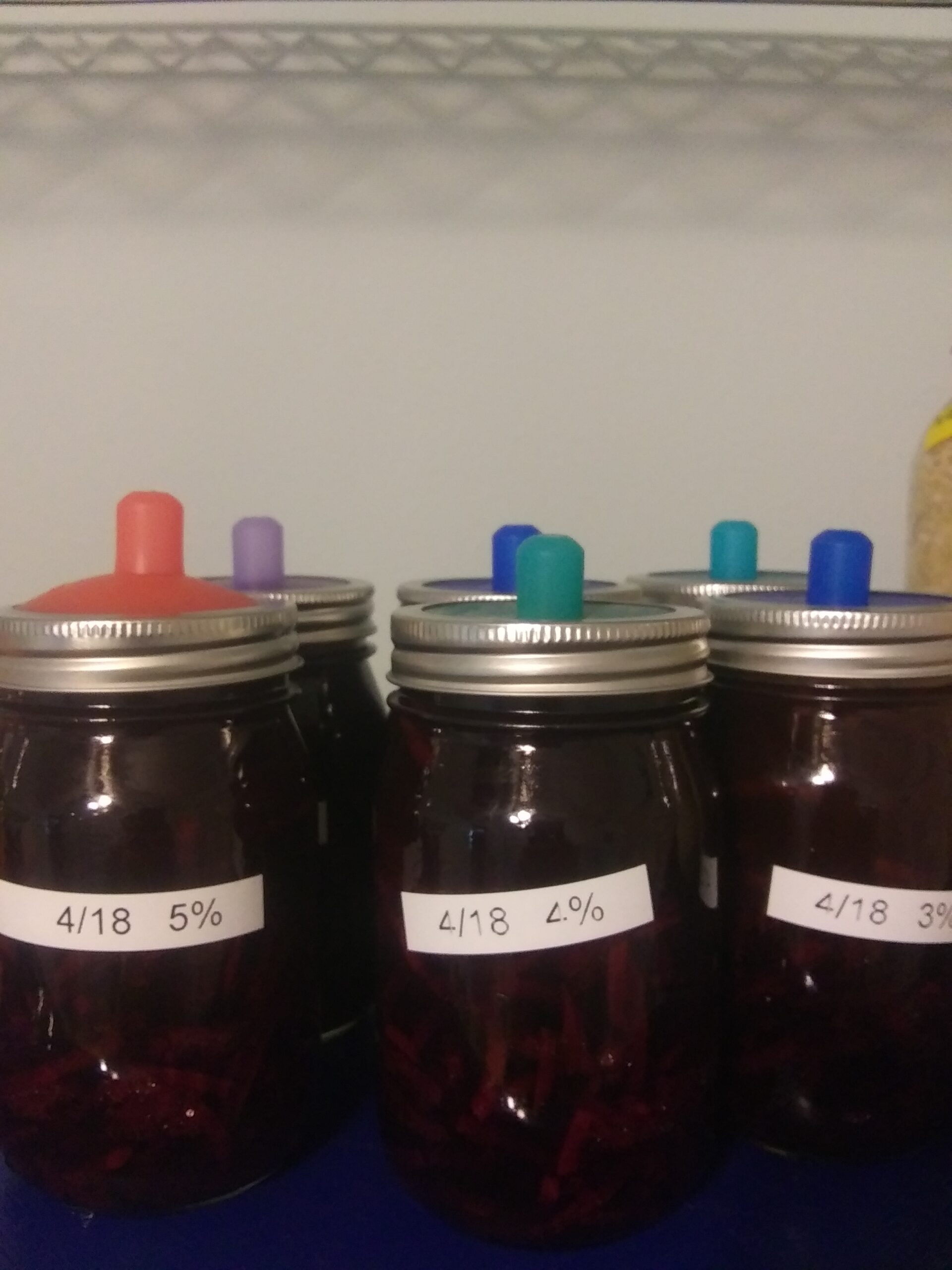
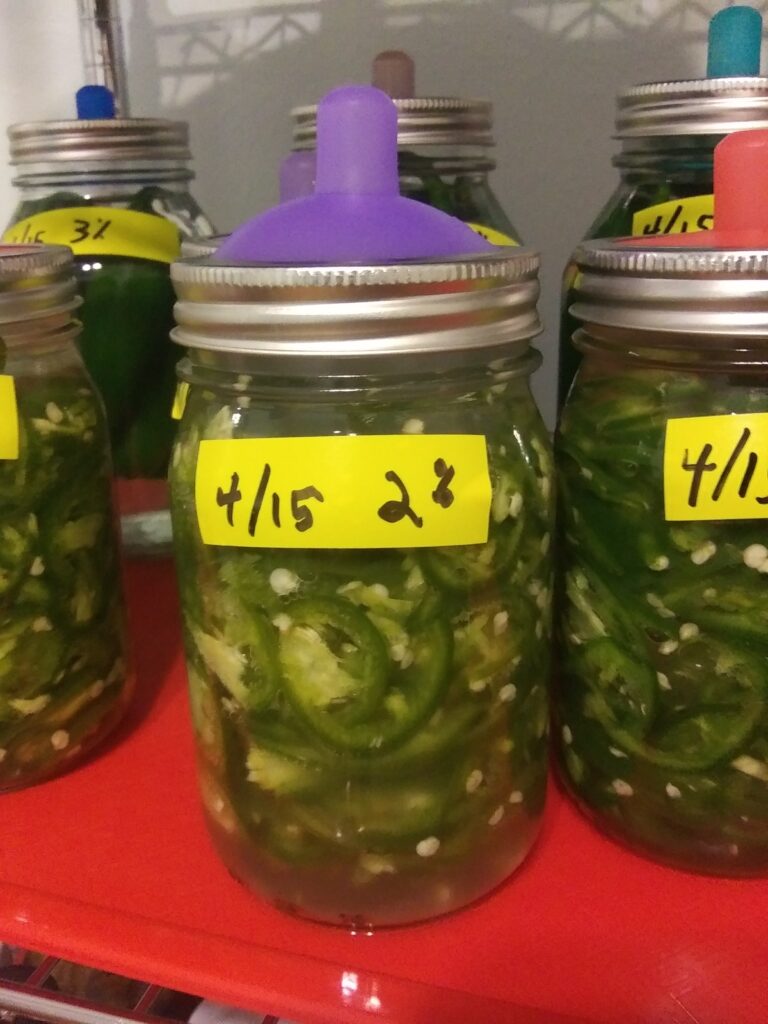
At farmers markets many people ask my advice on fermentation. When they tell me that there ferment never started the first thing I ask is if they added tap water at any stage in the process. Generally they would answer that they had. Using non-chlorinated water in your brine is vital. You are trying to cultivate and grow bacteria and chlorine is a powerful anti-bacterial agent. Don’t get me wrong, I’m not anti chlorine guy. Piping water through the city to my faucet requires the use of chlorinated water in my opinion. That being said, you should not ingest it. Your entire digestive track and particularly your gut need healthy living bacteria to function correctly. Don’t drink water that disturbs that. I use a reverse osmosis filter to clean my water and of course bottled water and rain water work as well. Having a large supply of non-chlorinated water on hand makes fermenting and cooking generally much easier.
Now that we know what salt and water to use, in what ratios should we mix them? To calculate the amount of salt to add its easiest to work in weight. Equate one millileter water to one gram salt. To make a 3% salinity brine of 1000ml water simply multiply .03 x 1000. The result is 30 so add 30 grams of salt to 1 liter of water to make 3% salinity. I took my salt which is a fine grade sea salt and weighed one tablespoon of it. It was 15 grams. This is an important step because the courseness of the salt will dramatically change its weight. If I am using a coarse grade salt I might find it only weighs 10g per tablespoon. Anyways I put all this together and created a cheat sheet for myself. Of coarse your cheat sheet might look different depending on the weight of your salt.
per 1000 ml water
1% salinity : 2/3 tbsp salt
2% salinity : 1 and 1/3 tbsp salt
3% salinity : 2 tbsp salt
4% salinity : 2 and 2/3 tbsp salt
5% salinity : 3 and 1/3 tbsp salt
6% salinity : 4 tbsp salt
7% salinity : 4 and 2/3 tbsp salt
8% salinity : 5 and 1/3 tbsp salt
9% salinity : 6 tbsp salt
10% salinity : 6 and 2/3 tbsp salt
I like to do salinity tests when I first start fermenting something. I just cut up a small batch of something thats just starting to come in season and that I am interested in fermenting. I then mix up 5 or 6 different brines typically ranging from 1%-6% or 2%-7%. Label your jars with the date and the percentage salt, pack the vegetables in the jar, and add the brine. I do this because I like to taste different salt levels that I may incorporate in different ways. Here is a quick reference of salinity levels for some common vegetables.
broccoli : 2% – 2.5%
cauliflower : 2%
celery : 1% – 2%
cucumber : 3.5% – 5%
garlic : 3%
green beans : 2%
onions : 5%
potatoes : 2%
radish : 5%
tomatoes : 2%
olives : 10%
beets : 2%
carrots : 2%
Okra : 3.5%
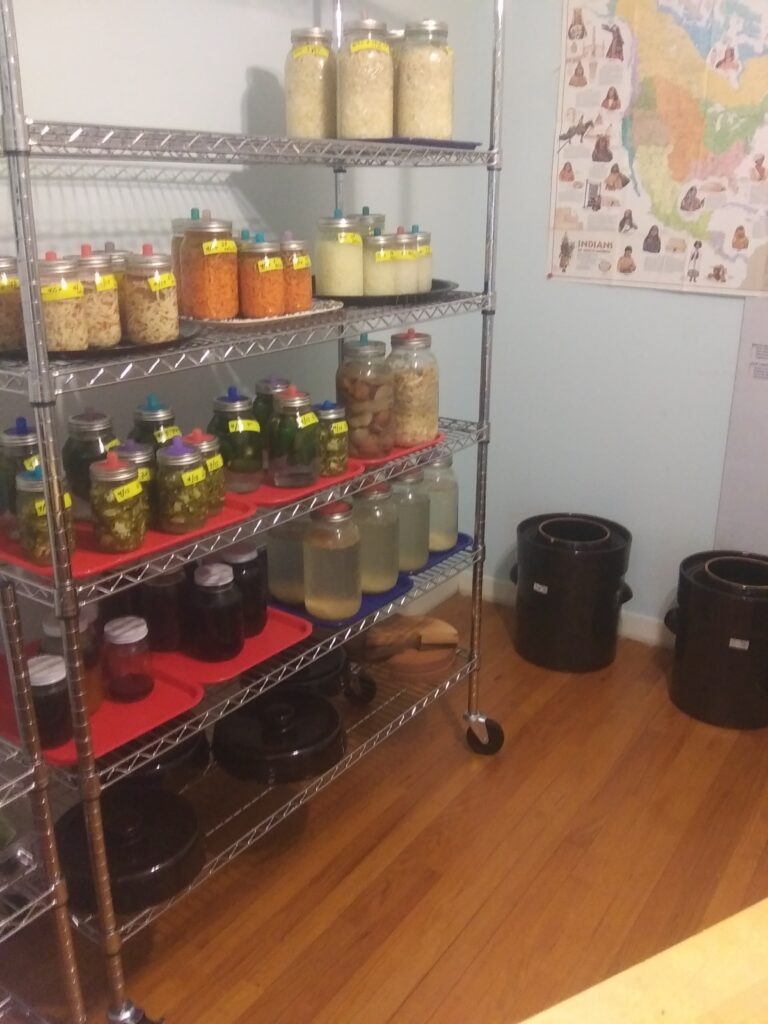
So those are the basics for making brine. But what fun is just adding salt? There are so many delicious spices you can add to your ferments that its almost a shame to do just a basic salt ferment. Try adding mustard seed or celery seed or heck try any seed. Adding garlic or ginger can add flavor and different beneficial bacteria profiles. Want to get crazy? Try adding a slice or two of lemon rind and a tablespoon of real honey. There are so many ways of spicing up your ferment it would be impossible to go through them all. Or maybe you prefer just salt and the vegetable. Go experiment and find out what you like, half the fun is the journey!



